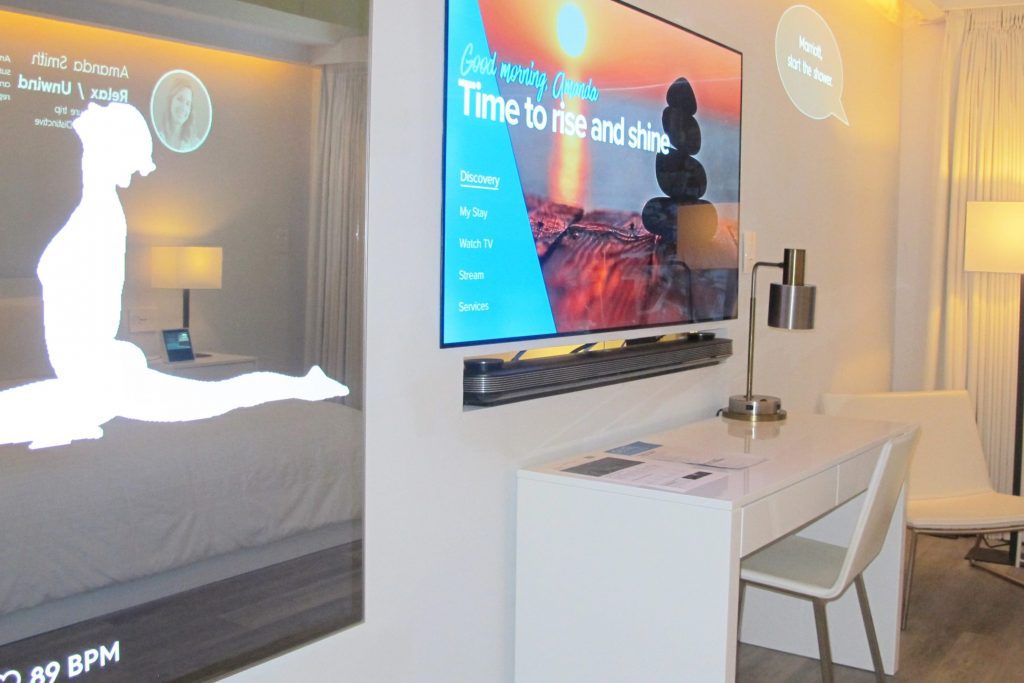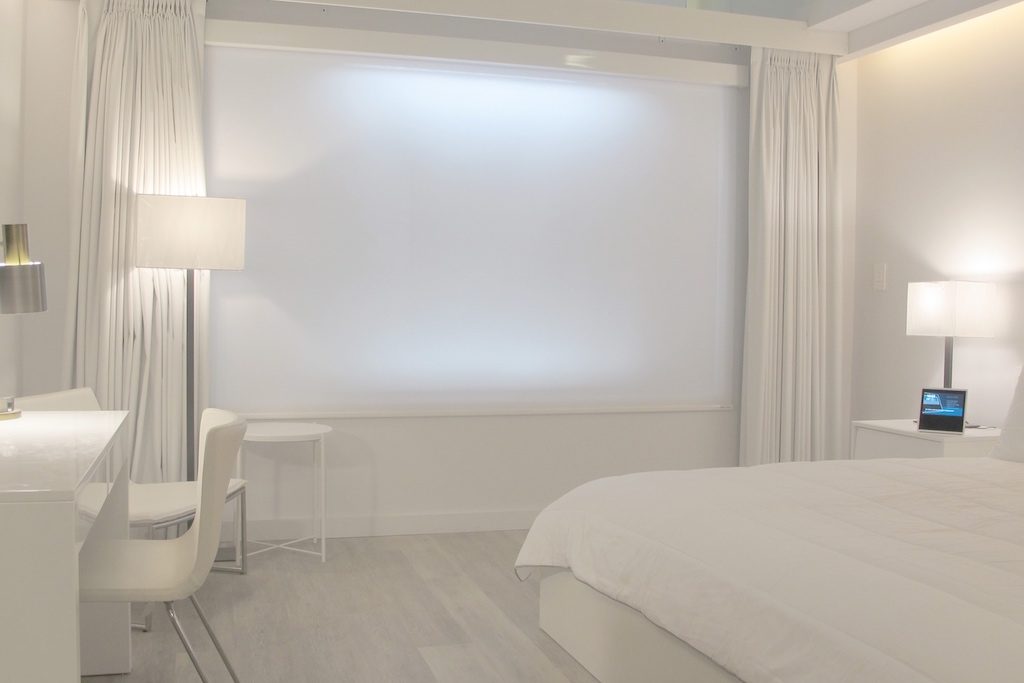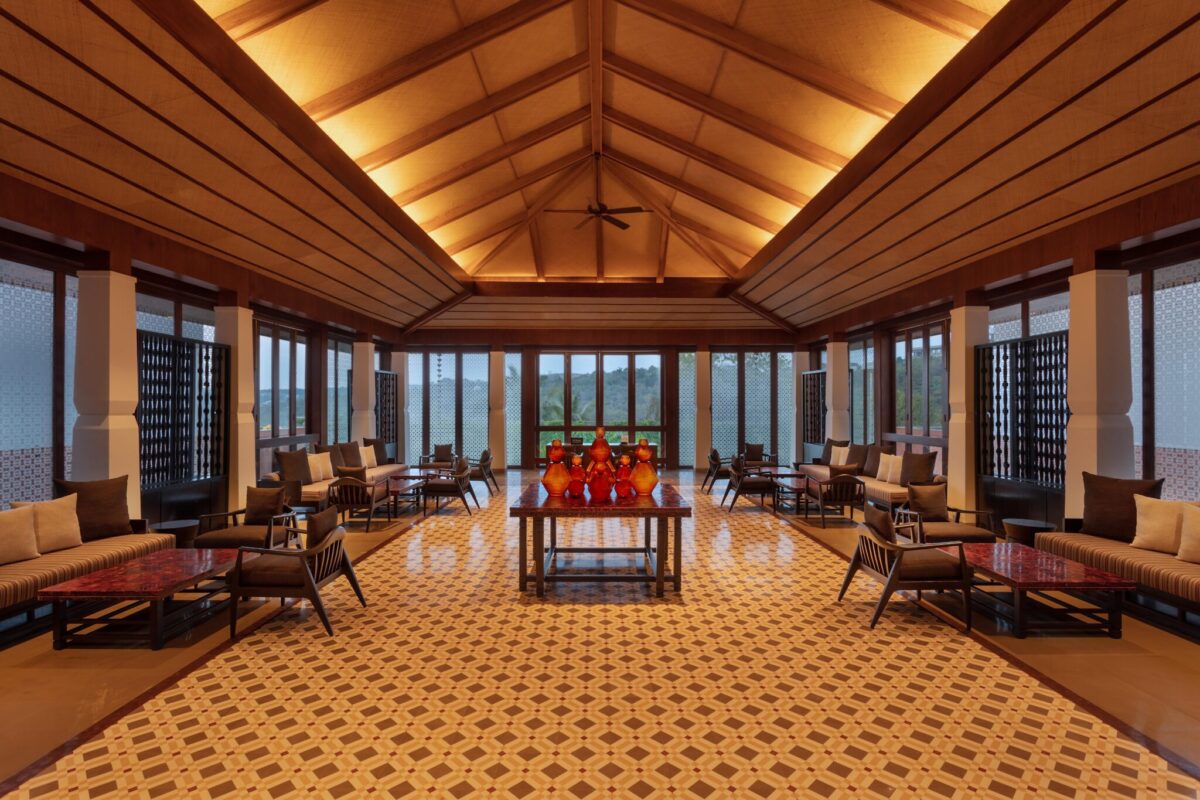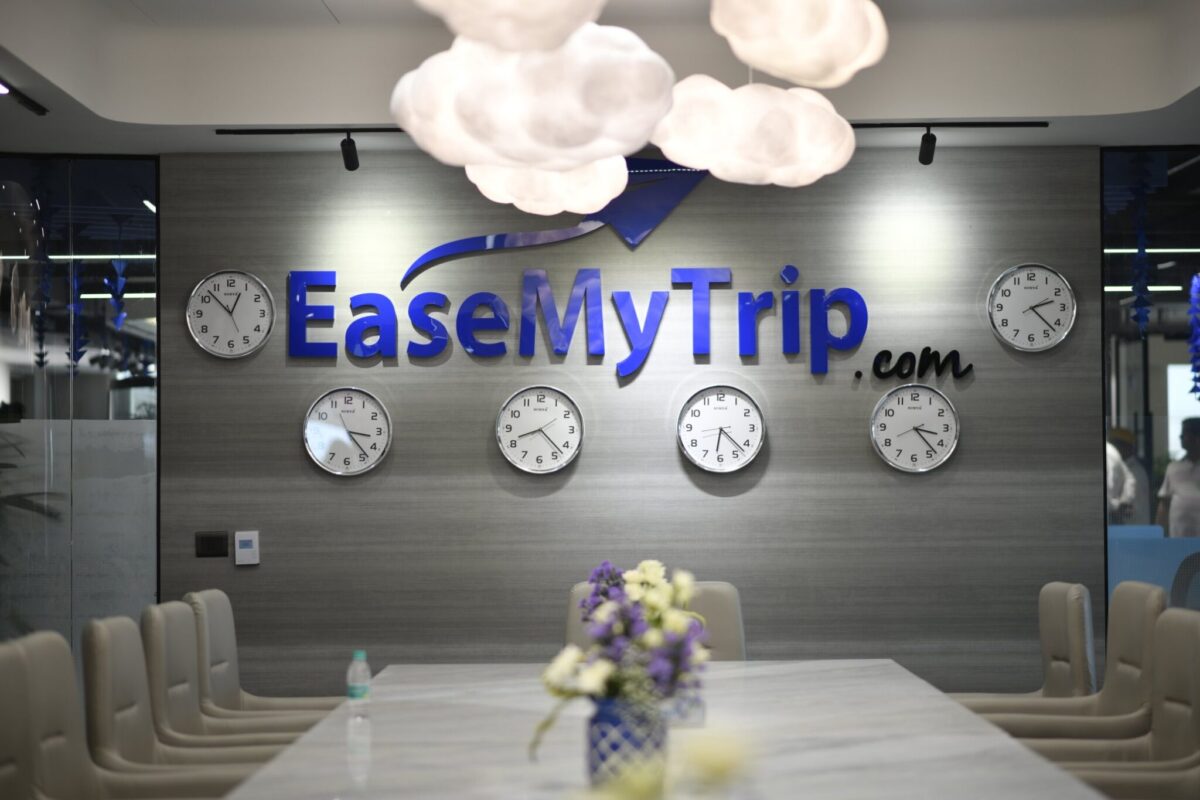Hilton and Marriott Turn to the Internet of Things to Transform the Hotel Room Experience

Skift Take
When Hilton CEO Christopher Nassetta took to the stage at the Skift Global Forum in September, one of the most headline-grabbing statements he made had to do with what he described as Hilton’s “Connected Room.”
“Imagine a world where the room knows you, and you know your room,” Nassetta said. “Imagine a world where you walk in, the TV says, ‘How are you doing, John? Nice to see you,’ and all of your stuff is preloaded and not only preloaded, but the only thing you ever need to touch to control in the room is in the palm of your hand,” he said, referring to a guest’s smartphone.
Hilton is currently beta testing this concept in a handful of hotels, and the company intends to expand this feature to more hotels worldwide in 2018.
But Hilton isn’t the only hotel company that wants to deliver smart, hyper-personalized hotel rooms. In fact, not far from Hilton’s Innovation Lab in McLean, Virginia, another major hotel company has similarly grand designs of using the Internet of Things (IoT) to transform the hotel guest experience. And last week, Skift got a firsthand sneak peek of this new guest room experience.
At Marriott’s own Innovation Lab, housed in the lower levels of its main headquarters office in Bethesda, Maryland, Marriott senior vice president of global design strategies Karim Khalifa and his team have also been working on their own version of a connected room.
“With this room type, we’re experimenting with technology that not only anticipates your needs, but also personalizes the experience for you,” Khalifa said.
Called the IoT Guestroom Lab, the Marriott facility consists of two different model guest rooms. One is meant to showcase what this technology might look like for a completely newbuild hotel, with all the bells and whistles of what’s currently possible with IoT technology. The other shows both owners and consumers what that experience could be like in already existing hotel rooms, with minimal construction or infrastructure changes.
Marriott just began showing the rooms to owners and consumer focus groups last week, and after some feedback, Khalifa and his team will then begin to decide if and how to initiate a formal pilot in different Marriott hotels.
Both Marriott and Hilton share, more or less, the same vision of delivering a hospitality experience that’s more personalized and smarter about anticipating guests’ needs during their stay. But how they respectively plan to achieve this goal involves two different paths.
Transitioning from Smart Home to Smart Hotel
As more consumers bring artificial-intelligence powered voice assistants like Google Home and Amazon Echo into their homes, more households are becoming “smart homes.” And while the number of people living in smart homes today is still relatively low — just more than 15 million, or 12.5 percent of U.S. households were considered to be in smart homes by the end of 2016 — that number is expected to increase to 28 percent by 2021, according to media research group Kagan.
“The Internet of Things has opened up home automation to the everyday consumer,” said Ken Freeman, senior vice president of demand generation at Legrand, an electrical and data communications product manufacturer. “Anyone can buy an intelligent thermostat, color-changing lamp, or smart door lock. As a result, consumers are starting to demand at least the same level of technology in the hotel guest room.
“Hoteliers have to identify the right level of technology for their properties and they need to implement these, even if only at a basic ability to remotely control lighting and temperature, or the consumer is going to judge them as antiquated and irrelevant. The hoteliers that get this right will gain the loyalty of the next-generation traveler.”
But translating the smart home experience into the hospitality world, and getting it right, presents a variety of challenges related to cost, infrastructure, and security, among many others. Currently, there are technologies such as sensor-activated thermostats, digital room keys, and in-room streaming/casting services, but most brands have yet to connect them through a comprehensive system or platform powered by IoT.
Last year, Skift spoke to Scott Hansen, Marriott International director of guest technology, who told us: “The future of the guest room will be voice activation. Amazon Echo and Apple’s Siri are consumer versions of this technology. I have all that in my own home. That is the future. Whether we use that existing tech or some other voice-activated mechanism has yet to be determined. The real brick in the road is trying to get the Internet of Things upgraded to the net-connected appropriate part of the network. It’s very expensive to retrofit everything in a hotel.”
One year later, those strategies for bringing the smart home into the hotel room are beginning to become much more apparent. For now, the extent of the smart home technology being brought into the hotel room consists of an Amazon Echo in every room, as is the case with Wynn Resorts, for example. Other brands, Marriott and Best Western included, have also piloted the placement of these voice assistants in hotel rooms.
Robert Cole, the founder of RockCheetah, a hotel marketing strategy and travel technology consulting firm, said that as more hotel companies begin to explore IoT-connected rooms in varying degrees of depth, they’ll “need to work on replicating the experiences that these travelers have in their homes, already in their everyday lives. How can they make that a seamless transition when they travel? And do all the same things? That will be challenging.”
Another challenge is the ability to deal with a variety of devices. The way that many of today’s IoT systems are set up involves ecosystems of single brands: all Apple, all Google, all Amazon, for example.
“Think about a hotel room,” said James Stansberry, senior vice president and general manager of ARTIK IoT for Samsung Electronics. “There are dozens of different products in there from many different manufacturers — curtain shades, thermostats, TVs, light switches, etc. How do you connect all of those devices together easily and be able to trigger an action easily?”
As Marriott and Hilton are finding out, there are different ways to make a hotel room “smart” and all the more personalized for guests. Here’s a closer look at what they’re up to.
Hilton’s DIY Approach
During Hilton’s most recent third quarter earnings call with investors, Nassetta gave a few more details about Hilton’s Connected Room, describing it as “the first truly mobile-centric hotel room.”
He said, “Through the app, members will be able to seamlessly control their room’s lighting, HVAC [heating, ventilation, and air conditioning], and entertainment options, including pre-loaded and streaming content.”
Last week, Skift spoke to Hilton spokesperson Julia Burge, who also gave us an update and more insight into Hilton’s IoT guest room strategy.
For one thing, Hilton’s smart room technology is proprietary. “Our teams are constantly testing off-the-shelf stuff,” Burge said, “but nothing that is direct to consumer provided enough, both for our guests and hotel owners, so we built something from the ground up.”
Hilton has invested heavily in its mobile app technology over the past few years, including adding Digital Key access and giving loyalty members the ability to pick their own room when checking in via mobile.
For now, the types of things this platform can support relates to controlling lighting, air conditioning/heat, and streaming entertainment, and all of it is controlled through a guest’s smartphone, via the Hilton Honors mobile app. “The smartphone will be the remote control of the hotel room,” she said.
Guests who opt into Hilton’s loyalty program and to relating their guest preferences to Hilton will be able to personalize their stays with the Connected Room.
One thing that isn’t included in Hilton’s Connected Room, however, is voice activation. “We’re constantly testing that,” Burge said, “but the pilot being rolled out will not have voice for the time being. At this point, we don’t have a voice technology component.”
“I think there’s a challenge right now with voice technology in that it isn’t totally reliable yet,” said Makarand Mody, assistant professor of hospitality marketing at the Boston University School of Hospitality Administration. Last year, Mody, together with a group of students, worked on pitching a smart room concept to Park Inn by Radisson hotels last year. “But if this type of experience is intended to be seamless, I think voice will play a key role,” he added.
Burge, however, noted that the platform that Hilton has created is meant to “grow and expand as the availability of technology grows and expands,” implying that voice could eventually be added in the future. Burge added that Hilton is currently in negotiations with a variety of streaming media partners as well, and that it is still identifying other tech partners it may want to work with going forward.
Another benefit, she said, of the Connected Room, is the ability to inform the back-of-house hotel staff to specific guests’ or room needs.
Burge said that while Hilton still isn’t ready to make a full announcement about Connected Room, it plans to begin media previews of the Connected Room in December, and has already demonstrated what the technology can do at Hilton’s annual owner’s conference earlier this year. She also confirmed that the rooms are already being tested in a handful of hotels at the moment, and the pilot will expand “in a bigger way” in 2018.
Marriott’s Partnership Strategy

Marriott’s IoT Guestroom Lab features two model guest rooms outfitted with technology that enables rooms to be voice-activated. Shown here is the model for a newbuild hotel room. The all-white design was meant to be brand-agnostic. Source: Marriott International
Marriott, unlike Hilton, is not building its own technology from the ground up. Instead, it has decided to partner with Legrand and with Samsung to bring its own IoT guest room to life.
Khalifa said he was inspired to work with the two companies after attending a conference hosted by Legrand back in November 2016. The conference was meant to serve as a showcase for Legrand’s Electrical Internet of Things (Eliot) program. It was there that he saw the smart home concept come to life, and he thought, “How do we do this in the hotel world?”
Samsung, which had already been a technology partner of Legrand’s for more than two years, provides the cloud-based IoT platform, called ARTIK, that brings everything to life. The enterprise-level platform works not only for Samsung products, but also third-party devices and clouds securely.
“It’s Samsung’s hope to map all 20 billion connected devices to this cloud by the year 2020,” Khalifa said. “There’s no wiring necessary, because everything is cloud-powered. And because [ARTIK] it’s brand-agnostic, it’s meant to be neutral — you can bring in devices that never really talked to each other before.”
Together with Samsung and Legrand, Marriott has built two different prototype rooms, each programmed with different scenarios for three different types of travelers: a yoga-minded meeting planner; a frequent road warrior; and a family of four on vacation.
“Guests will have to opt into giving us their information and creating their profiles, and these profiles are then memorized so the scenes are set for you,” Khalifa explained. He emphasized that only Marriott would have access to guest profiles and data to ensure guest privacy.
“What Marriott is trying to do is leverage guest profiles,” Freeman said. “The idea is if I’m a Marriott Rewards member, and my profile has my attributes and dislikes/likes, it can be set up to do things based on me and my type of trip, more personally. I might be on a business trip today, but for the weekend I might be spending time with my wife on vacation,” he said.
In the newbuild room, some of the tech features on display include a smart mirror; a smart art frame; a smart shower and faucet and for now, an Amazon Show for voice-activated commands. Khalifa said Marriott hasn’t yet committed to a single natural language processing system for rolling out these rooms. Guests can easily adjust the lighting, temperature, humidity, curtains, artwork, etc. just using their voices. Sensor presence technology knows when you get out of bed at night and automatically turns on red nightlights that guide the path to the bathroom. It also knows how many people are in the room and adjusts the amount of oxygen in the room accordingly.
In the renovated smart room, the Amazon Show is replaced by an Amazon Dot and the primary way to control the room’s smart features are through the TV’s remote control. Instead of having customized data cables placed in the room as with the newbuild, the renovated room only requires the placement of a TV box and Wi-Fi enabled switches.
For now, the three primary ways for guests to control Marriott’s smart rooms include: voice, TV remote, and manual control. Khalifa said the features will most likely also be controlled through the Marriott app eventually.
“What we want to do is get to a point where almost every guest feels the benefit of the technology, even if they’re not actively leveraging it through an app or voice,” Freeman said.
Some of the possible scenarios and use cases Khalifa described as being enhanced by this technology included the following:
- Doing your morning yoga routine with the help of the smart mirror, which can also monitor your heart rate
- A personalized welcome screen on the TV for each and every guest
- Specialized lighting, such as blue tones in the morning to help you wake up
- Being able to order a car service from the room (There are “tentacles outside the room” for this technology, too, Khalifa noted.)
- By placing beacons on equipment in the fitness center, Marriott can tell you which pieces of equipment are available without you having to leave your room, only to find out that fitness center equipment you want to use is being occupied
- Being able to order Starbucks coffee and have it waiting for you in the lobby
- Choosing the artwork that’s displayed in your room and having it automatically dim at night to help you sleep better
And at some point, Samsung’s Stansberry said, it’ll be “entirely possible for the technology to use machine learning, over time, to know a specific person’s habits and make a prediction.”
So, at some point, guests may not even have to say anything at all, for their rooms to know exactly what they might need.
Convincing Hotel Owners
While Marriott and Hilton invest in these smart hotel rooms, the one decision-maker they’ll both have to convince are their respective hotel owners. While both companies didn’t divulge what the costs associated with this technology are exactly, both, not surprisingly, said that there’s significant return on investment in having smarter hotel rooms.
Khalifa said that some owners could save as much as $300 a year per room in energy conservation because the rooms will be smart enough to know when to shut off air/heat/lights or pull shades to conserve energy.
He also said that, for newbuilds, the use of data cables is actually cheaper than the use of traditional steel/copper wiring and don’t require the need for an electrician to install. “It’s a paradigm shift in construction,” he said.
Hotel owners also have to be mindful that there’s a danger in being too ahead of the curve when it comes to adopting technology, too. Hoteliers risk coming off as too gimmicky if they just do some small type of integration — like having a voice assistant in every room — but going all in on the whole suite of technology available today is just as risky if not more because of the costs and the fact that the technology is still a work in progress.
“I think hotel owners understand that technology is the way forward, and customers now assume that hotels will incorporate things like connected rooms going forward,” Mody said. He said brands will have to make the case to owners that not only can this technology streamline operations, but that it also has added revenue potential, including cross-selling and enhance selling opportunities, and the ability to leverage better guest data.
As for which hotels will likely incorporate IoT first, Mody thinks lifestyle and experiential brands will take the lead because guests of full-service hotels still expect “a higher level of human touch.” Midscale and economy brands, he said, will likely be the slowest adopters.
From Beta Testing to Reality
While Hilton, Marriott, and their peers explore this technology even further, it’ll be crucial for them to pay close attention to the user experience, say Cole and Mody.
“If, as a guest, I have to struggle with the technology — it doesn’t do what it’s supposed to do, or the assistant can’t understand my voice commands, for example — this technology has the potential to make the experience more frustrating than liberating,” said Mody.
He continued, “Seamlessness is the second critical factor. Brands need to put this technology to the Turing Test, whereby the technology’s ability to be able to exhibit intelligent behavior has to be equivalent to or indistinguishable from that of a human. Until then, the tech won’t really enhance the guest experience beyond the novelty or ‘this is cool’ factor.”
Where brands can offer value, however, is in the degree to which they’re able to personalize individual guest’s experiences, say Mody and Cole. And for that, tying this technology to loyalty programs will be crucial.
“I think Hilton’s use of its loyalty app is a smart move,” said Cole.
“The loyalty tie-in is critical here,” Mody added, “and it needs to be the central value-creator in this process.”
Another thing for the hotel companies to consider is how to scale this type of technology accordingly for different brands and varied guests: Do they offer less or more functionality based on the chain scale or type of hotel property? Do they scale functions differently based on a guest’s loyalty status?
As for which hotel company has the superior strategy for incorporating IoT into the hotel guest experience, the jury is still out.
“Building your own framework has a higher initial investment however, over time, and over hundreds of new properties being built on the platform and existing properties being brought on, the costs get distributed across the network through economies of scale,” said Mody. “That said, it is a longer-term investment than working with partners — which also has its challenges of making sure the various pieces of technology talk to each other.”
“Theoretically, I like Hilton’s approach slightly better,” said Cole. “But because I’m fuzzy on what they plan to do with the voice component — I really hope they have a clear product plan for how voice is integrated into this, because people love using voice assistants — I’m going to wait and see what develops. If Marriott decides to incorporate this into their app, too, it would be a killer app.”
As for other technology that should be on hotels’ radar these days, Mody noted, real-time, voice-based translation such as Google’s Pixel Bud technology as a potentially significant differentiator, too. “For technology in the guest room to be truly inclusive, it has to be able to cater to the language needs of people from across the world.”
Below are two videos that give you a closer, behind-the-scenes look at Marriott’s IoT Guestroom Lab:
https://youtu.be/VNV2qEX1TXo
https://youtu.be/xJ9wCStzrKQ




